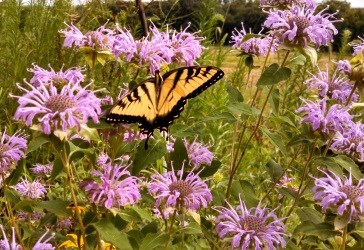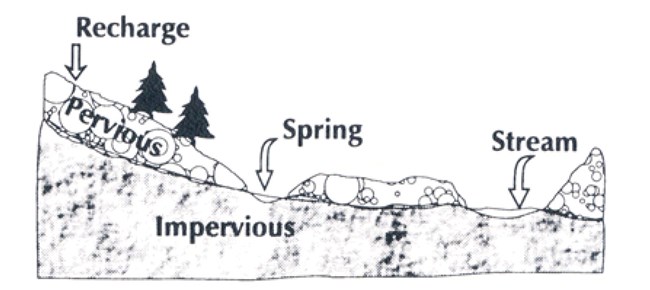
Directions (5601 Minnehaha Park Drive South, Minneapolis) Restoring an Urban National ParkBuildings from the former 'Bureau of Mines' site were demolished and the Coldwater Spring was re-opened to the public in 2012. The National Park Service, partners and volunteers have been working since to restore the prairie, oak savanna and wetlands surrounding the historic spring house and reservoir. 
Monarch caterpillars chomp on the 4 milkweed species planted and seeded (Coldwater Spring Plant List (PDF; 155kb). Amphibians and reptiles, like tiger salamanders and snapping turtles, have been seen feasting on invertebrates in the newly restored wetlands. Eastern bluebirds stop over during spring and fall migration to fill up on insects and water. Ospreys dive-bomb fish living in the springhouse reservoir. Red fox and coyotes prey on small mammals that burrow in the restored prairie. Wildlife, insects, native fish and migrating birds are all signs of a healthier ecosystem at Coldwater Spring. Field crews and volunteers are hard at work year-round removing invasive plants, like garlic mustard and buckthorn, and planting native species to restore key areas of habitat. Restoration maps (PDF 519 KB) give a closer look at the exciting areas of restoration at Coldwater Spring. 
A Park in ProgressVolunteer commitment is vital to the long term success of Coldwater Spring's restoration goals. Find out how to donate your time and volunteer to help make Coldwater Spring a healthy and resilient natural resource. 
MN Department of Health Coldwater Spring Water QualityBased on previous water quality tests and the nature of an open unprotected water source, the National Park Service (NPS) recommends not drinking water from Coldwater Spring. No future testing is planned and no signage will be posted. Is the water at Coldwater Spring potable/drinkable? Water from Coldwater Spring is not safe to drink. Coldwater Spring can be classified as a “Gravity Spring” which is “formed by water soaking into the ground until the water encounters a confining layer that will not let the water seep further down (Gravity Spring image).” The water quality of Coldwater Spring is impacted by many variables. As seen in the Gravity Spring image, the spring is fed from an area known as the "recharge" area. Contaminated water runoff from the surrounding landscape and land uses enters this area and filters through the pervious rock. The pervious rock in this case is fractures in the limestone bedrock that do not act as an effective filter or remove all of the contaminants. Water runoff and seepage also enters the spring directly due to the deterioration of the structures. These sources can be entirely unfiltered and potentially carry harmful bacteria and chemicals. Since the spring is an open unprotected structure, all animal and human interactions also represent potential sources of contamination. 2005 Coldwater Spring Water Quality Assessment In 2005, the Minnesota Department of Health conducted an on-site water quality assessment of the Coldwater Spring water supply. The assessment noted that “the spring and reservoir were open and unprotected subjecting the water to environmental contamination from the immediate surroundings, compromising the integrity of the water.” Water samples were taken and the test results were “positive for bacteriological contamination of total coliform indicating organisms but absent of E. Coli… Therefore the water supply would be deemed as of unsatisfactory sanitary quality and unfit for human consumption.” Coliform bacteria indicate the possible presence of disease-causing organisms. MN Dept of Health has Halted Testing of Springs According to the Minnesota Department of Health, “periodic testing of springs for bacteria and nitrate has been proven to be generally ineffective in assuring a sanitary water supply because of rapid fluctuations in water quality and because many other possible contaminants may be present in spring water.” The Minnesota Department of Health (MDH) routinely sampled springs for coliform bacteria and nitrate-nitrogen in the 1960’s and 1970’s but has since stopped due to results indicating that 85 to 90 percent of the sampled springs were contaminated with coliform bacteria or nitrate at one or more times. |
Last updated: November 27, 2023
